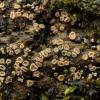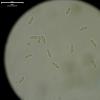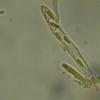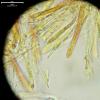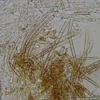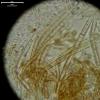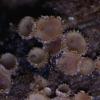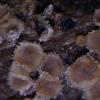
25-04-2018 21:03
Manak RomanHello,I found nice ascomycete (max around 1 mm) on

02-05-2018 19:43
 Alvarado Cordobes Manuel
Alvarado Cordobes Manuel
Hola a todos.Tamaño unos 0,6 mmEn cañas de una g

06-05-2018 20:02
 Andgelo Mombert
Andgelo Mombert
Bonsoir à tous,Sur tiges mortes de plante herbac�

04-05-2018 22:52
Thorben HülsewigHi there,today i found this black spots on Rosa ca

21-04-2016 14:21
 ghania azouaoui
ghania azouaoui
Hello evrybody. I have isolated a species of Keiss

02-05-2018 16:56
 Blasco Rafael
Blasco Rafael
Hola, parece que sea la propuesta? sobria madera d

01-05-2018 20:37
 Angel Pintos
Angel Pintos
Hello, I need help with this bitunicate apothecium

02-05-2018 17:44
 Danny Newman
Danny Newman
Hello AscoFrance,This was found on fallen, decorti

01-05-2018 14:51
hannie wijersHello, I'd lilke some hep. At Peltigera didactyla
Neodasyscypha cerina?
Manak Roman,
25-04-2018 21:03
I found nice ascomycete (max around 1 mm) on decaiyng hardwood (Ace pseudoplatanus, Carpinus betulus and Populus cf. nigra around the place of the find).
Spores nonseptate, 6.0 - 8.0 × 2.1 - 2.9 µm (N = 40), asci amyloid 37 - 45 × 3.6 - 5.0 µm, with croziers, paraphyses more or less lanceolate exceeding asci by 7 - 11 µm, 2.0 - 2.7 µm wide. Hairs septate, light brown to almost hyaline upwards, slightly encrusted, multiseptate, 3 - 4.5 µm wide.
Is it Neodasyscypha cerina???
Hans-Otto Baral,
25-04-2018 22:05

Re : Neodasyscypha cerina?
Definitely not. This looks like my new species Lasiobelonium populi, still undescriped. it would be
good to clarify the host genus by wood anatomy.
I would be glad to receive the collection data from you.
Zotto
good to clarify the host genus by wood anatomy.
I would be glad to receive the collection data from you.
Zotto
Manak Roman,
26-04-2018 19:21
Re : Neodasyscypha cerina?
Thank you very much, Zotto. Here are informations about find.
Date: 22.4.2018
State: Czech republic
Place: south Moravia, near Zdanice (49.07895N, 17.00599E, altitude 240 m)
Locality: humid locality about a almost dry stream
Vegetation: deciduous forest (Acer pseudoplatanus, Salix alba, Fraxinus excelsior, Populus cf. nigra, Alnus glutinosa, Tilia sp., Carpinus betulus, Prunus spinosa, Sambucus nigra, Corylus avellana), around the place of the find only Acer pseudoplatanus, Populus cf. nigra, Carpinus betulus.
Here are some additional photos from stereomicroscope (magnification 20x).
I will microscopy wood on the weekend and I will write you.
Roman
Date: 22.4.2018
State: Czech republic
Place: south Moravia, near Zdanice (49.07895N, 17.00599E, altitude 240 m)
Locality: humid locality about a almost dry stream
Vegetation: deciduous forest (Acer pseudoplatanus, Salix alba, Fraxinus excelsior, Populus cf. nigra, Alnus glutinosa, Tilia sp., Carpinus betulus, Prunus spinosa, Sambucus nigra, Corylus avellana), around the place of the find only Acer pseudoplatanus, Populus cf. nigra, Carpinus betulus.
Here are some additional photos from stereomicroscope (magnification 20x).
I will microscopy wood on the weekend and I will write you.
Roman
Hans-Otto Baral,
26-04-2018 20:47

Re : Neodasyscypha cerina?
Many thanks! The substrate is a log or a thin branch? Looks decorticated.
Manak Roman,
28-04-2018 20:01
Re : Neodasyscypha cerina?
Zotto, I could not determine wood. My experience with microscopic determining of wood are still small and wood is in advanced decay.
A piece of wood with fungus lay on the ground in "wood pulp". Obviously he came from a bigger branch.
But I can send you an exssicate.
A piece of wood with fungus lay on the ground in "wood pulp". Obviously he came from a bigger branch.
But I can send you an exssicate.
Hans-Otto Baral,
29-04-2018 07:24

Re : Neodasyscypha cerina?
It may well be the best if you could send me a portion.
my address is
Hans-Otto Baral
Blaihofstr. 42
72074 Tübingen
Germany
Thanks a lot!
my address is
Hans-Otto Baral
Blaihofstr. 42
72074 Tübingen
Germany
Thanks a lot!
Manak Roman,
02-05-2018 19:38
Re : Neodasyscypha cerina?
Zotto, I sent the sample today. Here are all of my microscopic pictures from fresh apothecia in full resolution: http://mykologie.eu/download/lapo/lapo.html
Hans-Otto Baral,
02-05-2018 20:41

Re : Neodasyscypha cerina?
o.k., thanks! And with scale, very good.
Zotto
Zotto
Hans-Otto Baral,
06-05-2018 09:55

Re : Neodasyscypha cerina?
Dear Roman
yesterday your sample arrived. I confirm Populus and L. populi.
If you give me your email address I will send you my images.
What do you remember, was it a lying trunk with maybe 10 or more cm diameter? The moss on it might be Hypnum.
Zotto
yesterday your sample arrived. I confirm Populus and L. populi.
If you give me your email address I will send you my images.
What do you remember, was it a lying trunk with maybe 10 or more cm diameter? The moss on it might be Hypnum.
Zotto
Manak Roman,
07-05-2018 20:34
Re : Neodasyscypha cerina?
Zotto, thank you for determination. The lying branch was rather disintegrating, but it was definitely thicker than 5 cm, but I do not know if it was thicker than 10 cm.
Upon another visit to the site I will look again at this fungus, but here is a great drought :-(
My email: roman.manak@gmail.com
Upon another visit to the site I will look again at this fungus, but here is a great drought :-(
My email: roman.manak@gmail.com
